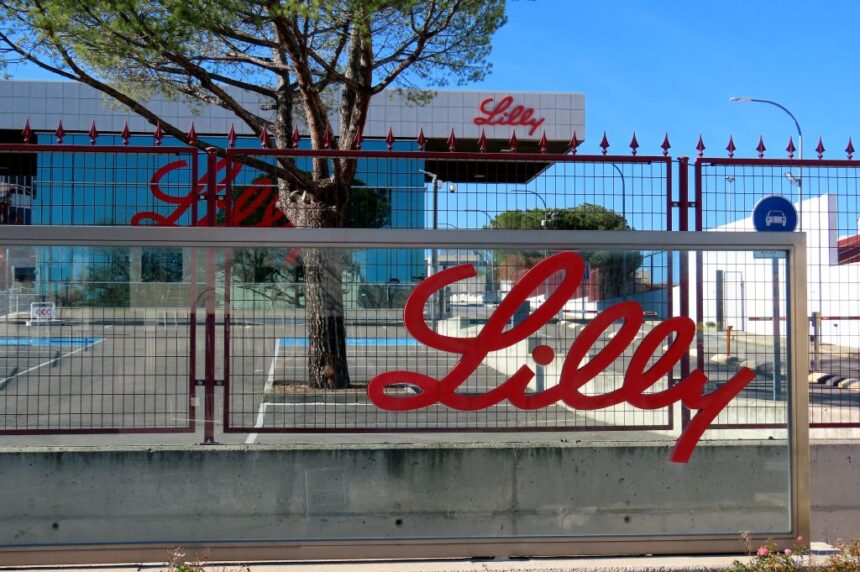The Eli Lilly train keeps rolling right along, as the pharma giant released impressive financials in its latest earnings report Tuesday morning.
For the quarter, Lilly’s revenue rose 26% to $8.7 billion, supported largely by its diabetes treatments and popular GLP-1 drugs.
Type 2 diabetes medication Mounjaro generated $1.8 billion in revenue, up from $568.5 million in Q1 2023, while its GLP-1 counterpart Zepbound reeled in $517.4 million over the same period.
Though Trulicity’s revenue slid 26% to $1.4 billion, Verzenio increased 40% to top $1 billion in revenue while Jardiance jumped 19% to $686.5 million.
Similar to its rising revenue, Lilly’s net income jumped 67% to $2.2 billion, while its reported earnings per share (EPS) increased 66% to $2.48.
As a result of this strong topline performance, the drugmaker raised its full year revenue guidance by $2 billion to the range of $42.4 billion to $43.6 billion. Lilly attributed this decision to the potential growth from Mounjaro and Zepbound along with the company’s expanding production throughout the end of 2024.
“Lilly’s first quarter performance reflects solid year-over-year revenue growth with strong sales of Mounjaro and Zepbound,” Lilly CEO David A. Ricks said in a statement. “Our progress in addressing some of the world’s most significant health care challenges has resulted in increased demand for our medicines. As we continue to make pipeline investments that position us for future growth, we are rapidly expanding manufacturing capacity to make our incretin medicines available to more patients.”
For Lilly’s upward trajectory, Ricks has been well-compensated. Last year, he received $26.5 million in total compensation, up from $21.3 million in 2022.
Of note, Lilly and rival Novo Nordisk were reported having the largest market capitalization growth among the top 20 drugmakers in the first quarter, largely driven by the success of their respective GLP-1 drugs, according to a recent report out of GlobalData.
Lilly’s stock rose more than 7% during the trading session late Tuesday morning.
Lilly’s strong quarter is all the more noteworthy considering the ongoing supply shortages it has faced due to unprecedented demand for its weight loss drugs.
In early February, the FDA’s drug shortage website identified 10, 12.5 and 15 mg doses of Eli Lilly’s diabetes drug Mounjaro as being in short supply through March. More recently, the company said nearly all doses of Zepbound and Mounjaro will be in limited supply until early summer.
To address these supply shortages and access issues, Lilly has taken a series of proactive operational steps to boost production and align with a significant partner.
In mid-March, the company selected Amazon as its third-party dispensing provider to make home deliveries of select diabetes, obesity and migraine drugs through its telehealth offering LillyDirect.
When it came to advertising its two GLP-1 offerings, Lilly veered into the evolving conversation around obesity and weight gain in a very public way.
During the 96th Academy Awards, Lilly aired two short films supporting its Get Better campaign to remind people that Mounjaro and Zepbound aren’t intended for cosmetic weight loss purposes and encouraged the further destigmatization of obesity.
Additionally, label expansion appears to be the next frontier for Lilly and the industry as GLP-1s have been linked to reducing the risk of cardiovascular events and researched for their ability to treat addiction, Alzheimer’s disease and fatty liver diseases.
A few weeks ago, the company released data from a Phase 3 trial that found an injection of tirzepatide significantly reduced instances of sleep apnea compared to a placebo. The company said it will present its results at the American Diabetes Association’s Scientific Sessions on June 21 and submit them to a peer-reviewed journal.
In response to the drugmaker’s earnings release, Citeline healthcare analyst Brandon Leavins wrote that continued exponential growth is going to hinge on how fast Lilly can act on getting supplemental indications.
“As it stands, we forecast for Novo’s semaglutide franchise to reach higher peak sales in the medium term (2027-2029) than Lilly’s tirzepatide franchise, but we’ll be paying close attention to each company’s commentary over the next few reporting periods for any evidence that tirzepatide’s growth will continue beating expectations, and whether semaglutide will maintain its market leadership,” he wrote. “We do not currently expect the tirzepatide franchise to dethrone semaglutide, but this impressive revenue beat is the first step for this type of upset to take place.”
This story has been updated to include commentary from Brandon Leavins.







